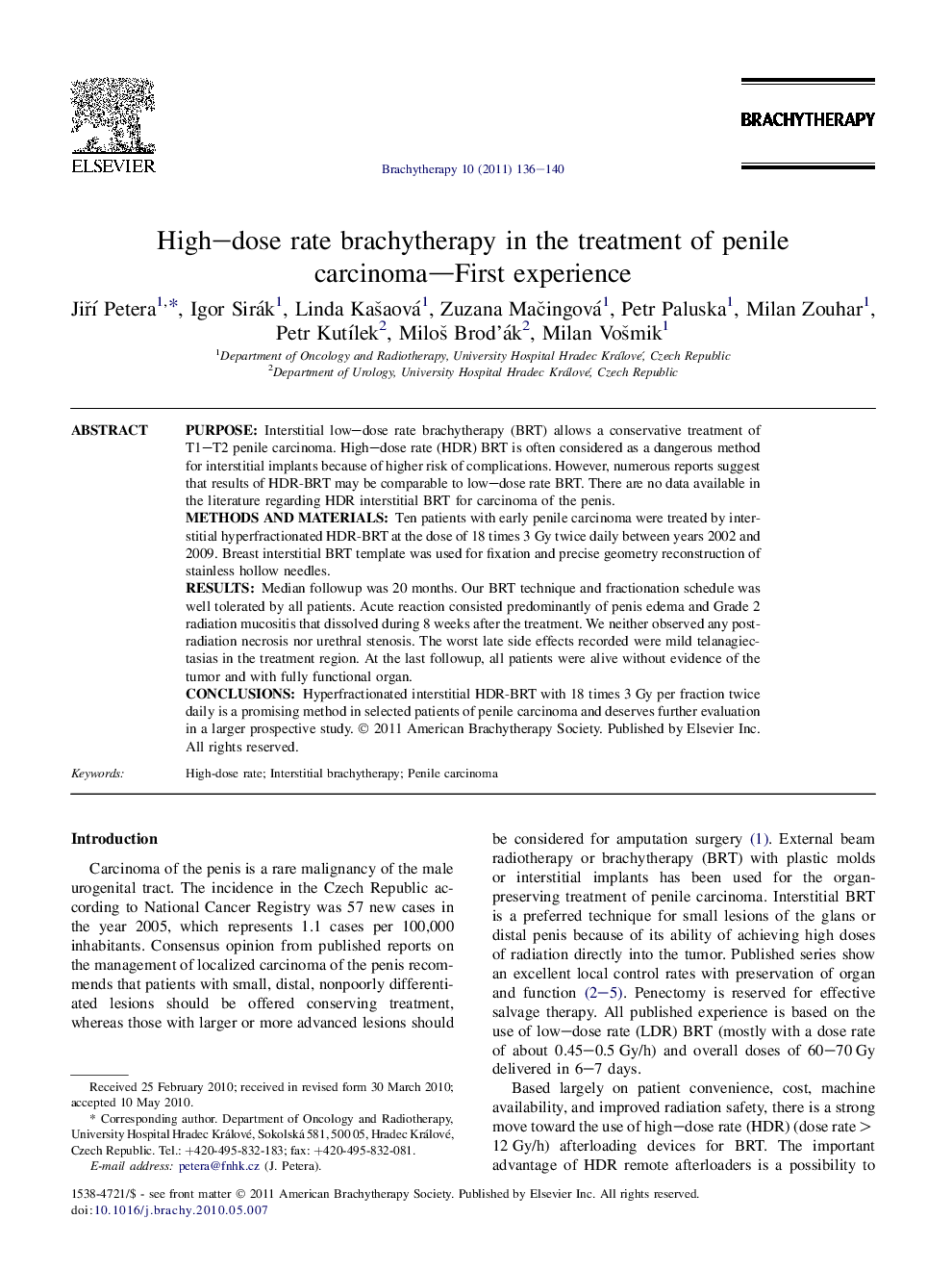| Article ID | Journal | Published Year | Pages | File Type |
|---|---|---|---|---|
| 3977173 | Brachytherapy | 2011 | 5 Pages |
PurposeInterstitial low–dose rate brachytherapy (BRT) allows a conservative treatment of T1–T2 penile carcinoma. High–dose rate (HDR) BRT is often considered as a dangerous method for interstitial implants because of higher risk of complications. However, numerous reports suggest that results of HDR-BRT may be comparable to low–dose rate BRT. There are no data available in the literature regarding HDR interstitial BRT for carcinoma of the penis.Methods and MaterialsTen patients with early penile carcinoma were treated by interstitial hyperfractionated HDR-BRT at the dose of 18 times 3 Gy twice daily between years 2002 and 2009. Breast interstitial BRT template was used for fixation and precise geometry reconstruction of stainless hollow needles.ResultsMedian followup was 20 months. Our BRT technique and fractionation schedule was well tolerated by all patients. Acute reaction consisted predominantly of penis edema and Grade 2 radiation mucositis that dissolved during 8 weeks after the treatment. We neither observed any postradiation necrosis nor urethral stenosis. The worst late side effects recorded were mild telanagiectasias in the treatment region. At the last followup, all patients were alive without evidence of the tumor and with fully functional organ.ConclusionsHyperfractionated interstitial HDR-BRT with 18 times 3 Gy per fraction twice daily is a promising method in selected patients of penile carcinoma and deserves further evaluation in a larger prospective study.
